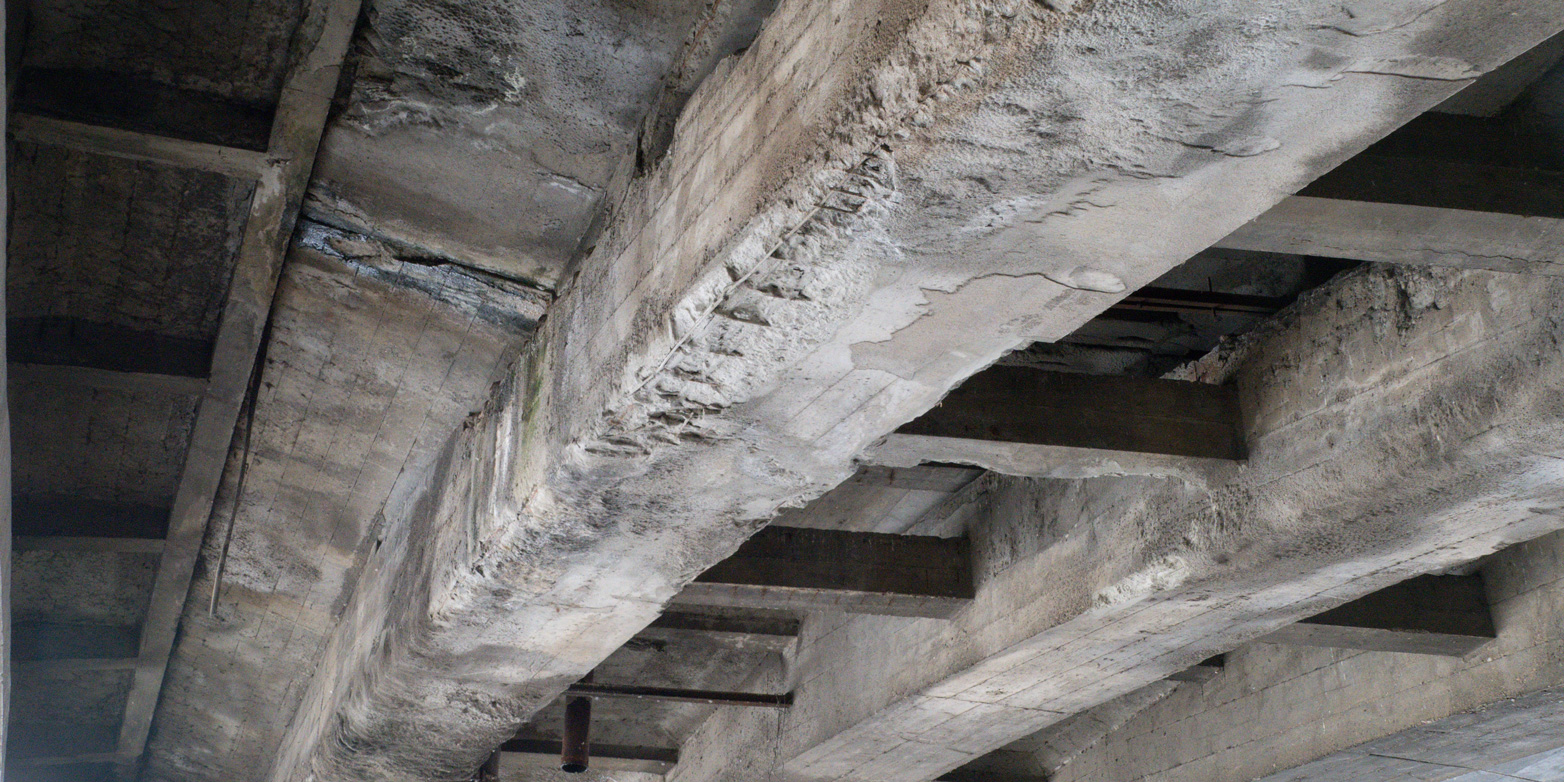Building materials and the race to net zero

To be more sustainable, the construction industry needs reliable service-life predictions for structures. Ueli Angst calls for a paradigm shift in forecasting the durability of reinforced concrete.
The construction industry is experiencing a revolution, with digitisation, decarbonisation and robotics-assisted fabrication all having a lasting impact on practice and research. Both in Switzerland1 and around the world, new materials and construction methods are in the pipeline to save resources, cut emissions and automate construction processes.
One challenge of engineering structures is their extremely long service life. Civil engineers must ensure that bridges, dams and tunnels remain durable for time frames extending to 100 years or more. This makes it difficult to learn from mistakes at an early stage; insights on the performance of a material or new method are often gained only decades after construction.
That’s why we need reliable long-term predictions. Without them, we run the risk that the structures built today and tomorrow will succumb prematurely to undesirable progressive deterioration. The problem, however, is techniques for forecasting ageing in engineering structures are still in their infancy.

Corrosion of steel in concrete
A good example here is the concrete industry. Concrete is the most widely used man-made material and a massive CO2 emitter – generating around three times as much carbon dioxide as aviation. The concrete industry has set itself the goal of reducing CO2 emissions to net zero by 20502, and an intensive search is underway to find climate-friendly alternatives, such as low-emission cements or reusing materials after a building is demolished.3 But which of these new building materials are really the most sustainable in the long term?
The Achilles heel of reinforced concrete structures is corrosion of the embedded steel. This is often caused by de-icing salts that penetrate the porous concrete and attack the reinforcement. The steel then rusts and the concrete crumbles. Corrosion is the most prevalent form of deterioration in civil engineering, and incurs huge costs – in Switzerland, some 1,000 Swiss francs per minute in road infrastructure alone. 4 Predictions of the condition and safety of civil engineering structures are therefore crucial. Unfortunately, however, the prediction models in use today have a limited ability to reliably forecast the corrosion of steel in concrete.
Wrong focusing hampers progress
In a perspective5, which I recently published together with researchers from North America and Europe, we reviewed the historical development of scientific prediction of corrosion damage. We found that all existing prediction models are based on a single theoretical concept that simplifies the service life of reinforced concrete as a two-stage process: in the first stage, corrosion-inducing agents penetrate the concrete cover; in the second stage, the reinforcing steel corrodes. This concept has dominated research for decades without making predictions much more accurate. Our analysis shows that the dominance of this one concept creates a bottleneck, severely hindering the emergence of new approaches.
“For all our enthusiasm for net zero, we shouldn’t lose sight of the long-term outlook beyond 2050. What we build today must be durable, safe and sustainable for generations to come.”Ueli Angst
Current prediction models focus on the first phase, which considers processes that occur before corrosion of the reinforcing steel sets in. In addition, these models draw largely on empirical experience with earlier building materials and so have very limited validity when it comes to new materials. What’s more, current regulations and testing methods are also based on the traditional paradigm and again only apply to new building materials to a limited extent. Worse still, and most regrettably, these regulations often put modern, low-emission building materials at a disadvantage for practical use.
Rethinking research and practice
For these reasons, I am convinced that a paradigm shift is urgently needed for forecasting corrosion. Science and engineering practice must break free of the two-phase concept and focus instead on the corrosion itself. We need scientifically sound models that reliably predict the actual corrosion damage and its effects on the load-bearing behaviour of a structure – for both old and new building materials.
Tools for strategic foresight
Deploying better predictive models would yield great benefits. They would enable more proactive maintenance of our increasingly ageing infrastructure, namely by determining the right time for repair – neither too late nor too early. Maintaining infrastructure is one of the grand challenges facing all industrialised countries. Unless significant advances are made in diagnostics and prognostics, this huge task will be almost impossible to accomplish without sacrificing the availability or safety of structures.6
Precise corrosion predictions are also the key to increasing sustainability in civil engineering. After all, what counts is the ecological footprint not just at the birth of a structure, but during its entire lifecycle. And life cycle analyses are difficult if you don’t know the service life.
Endeavours to promptly decarbonise the construction industry are to be welcomed. But for all our enthusiasm for net zero, we shouldn’t lose sight of the long-term outlook beyond 2050. What we build today must also be safe and durable for generations to come. Only with sound forecasting models can we make the right decisions today for tomorrow’s world and select truly sustainable building materials and processes from the range of promising ones.
References
1 Switzerland is playing a key role in transforming the construction industry, for example through the external pageNCCR Digital Fabrication.
2 Global Cement and Concrete Association: external pageRoadmap for Net Zero Concrete
3 Working to this end are ETH spin-offs external pageOxara and external pageNeustark and EPFL’s external pageLC3 Project. See NZZ Magazine (01.05.2022): external pageHat einen verheerenden Klima- und Fussabdruck: Beton
4 Angst U, Yilmaz D (2020): Korrosionsbedingte Kosten an Ingenieurbauwerken im Schweizer Strassennetz. doi: external page10.1002/best.202000004
5 Angst U et all. external pageBeyond the chloride threshold concept for predicting corrosion of steel in concrete. Applied Physics Review (2022). doi: external page10.1063/5.0076320
6 Leading industrial nations are already confronted by the deteriorating state of their infrastructure – as Germany’s crumbling bridge crisis shows only too well. See NZZ (09.03.2022): external pageDie Königin der Autobahnen hat einen Herzinfarkt: Wie die Sperrung der Rahmedetalbrücke eine ganze Region ins Chaos stürzt
